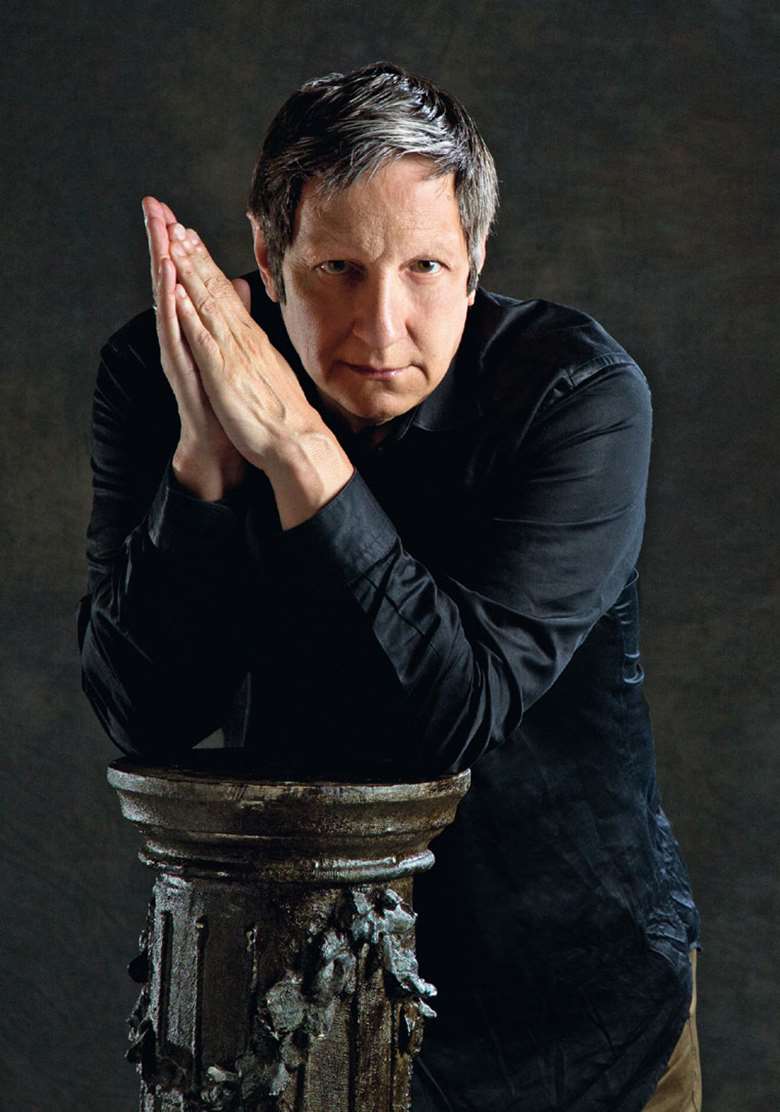Practitioner Focus: Robert Lepage
Rebecca Thompson
Sunday, March 1, 2020
A practical introduction to the theories and methods of the Quebecois theatre maker

TONY HAUSER
Background
Robert Lepage is widely considered one of the most influential living theatre practitioners.
Hailing from Quebec, Lepage is a multidisciplinary artist whose work as a director, playwright and actor spans theatre, cinema, opera and rock concerts.
His theatre is recognisable for its highly visual mise-en-scène which has earned him the status, according to The Guardian, of the ‘alchemist of modern imagistic theatre’.
In 2020 Lepage is staging a revival of his company Ex Machina's early masterpieces: The Seven Streams of the River Ota (1994); a seven-hour piece about the impact of the 1945 Hiroshima bombing.
Influences and methodology
Lepage's work is often compared with other notable contemporary directors such as Robert Wilson, Peter Brook and Elizabeth LeCompte.
Lepage's approach to making theatre is regularly described as playful, and develops through a process of collaboration, seeking alternative forms of storytelling for those dissatisfied with linear narratives.
As many of Lepage's productions tour the international festival circuit, work often evolves while in production.
Key features
- Personal histories and characters’ journeys of self-discovery
- Non-linear and fragmented narratives
- Often multi-lingual dialogue
- Multidisciplinary staging
- Use of puppets and transformations of props.
Themes
Lepage's work is often concerned with momentous world events told through the experiences of ordinary people. His upbringing in a bilingual (French and English) speaking household was extraordinary in Quebec City in the 1960s and consequently much of his work is influenced by a concern for language and communication.
In his own ‘memory’ play 887 (2017), Lepage takes the audience through fragmented recollections of his childhood and, as outlined on the Ex Machina website, the socio-historical events that shaped his identity.
Exercise 1: Transforming other people's stories
Lepage's productions regularly interweave stories; The Dragon's Trilogy (1994) follows two cousins’ lives and their relationships over 75 years. This exercise is designed to get students to retell others’ stories.
- Ask students to imagine an object that is important to them. They must mime holding it
- Instruct them to walk round the room and swap their object with another person using the following script:
- A: ‘This is my … and it is important to me because…’ hand B the mimed object.
- B: ‘Thank you. This is my … and it is important to me because…’ hand A the mimed object.
This process should be repeated several times and students pass on the object they have received:
- A: ‘This is X's … and it is important to them because…’ hand B the mimed object
- B: ‘Thank you. This is Y's … and it is important to them because…’ hand A the mimed object.
Bring students together in a circle and ask them to return the object to its original owner.
Exercise 2: Silent mind-map
Lepage has discussed that at the start of rehearsals the company begins by drawing a map of ideas. In his production of A Midsummer Night's Dream (1992), the decision to stage the production on a bed of mud emerged from this activity. This exercise aims to provoke thinking at the start of a devising process.
- In small groups, give students a large piece of paper and a coloured marker each
- Give groups a theme (connected to the topic being studied) such as ‘dreams’
- In silence, students contribute their ideas about the theme (in words or pictures) onto the paper. After a few minutes, students read others’ ideas and respond, in silence
- Once the paper is filled, students should talk and identify an idea that inspires them. This could form the basis of a staging idea, or a short improvisation.
Exercise 3: Extraordinary tableaux
Many of Lepage's productions centre on the relationships of ordinary people impacted by extraordinary world events. For instance, Far Side of the Moon (2000) explores the USAUSSR cold war space race told through the eyes of two brothers.
This exercise introduces students to this feature of Lepage's work and provides an opportunity for them to consider how stories can be told from different perspectives.
- Choose a world event. For example: The outbreak of WW2. Give students 5 bullet points which detail the chronological order of what happened
- In groups, students imagine a family. They must decide how this world event impacts this family directly or indirectly
- Next ask students to identify the order of events as experienced by their chosen characters in the family. For instance, in the chronology they were given, the first point could be ‘September 1939, Hitler invades Poland’. The students’ first event might be: ‘Family listening to Chamberlain announce the outbreak of war on the wireless’
- Groups should make a still image to represent each key moment, forming a tableau, which shows how the family experienced the event
- Extension: consider adding narration or bringing still images to life and discuss how the new order shifts the focus of the narrative.

